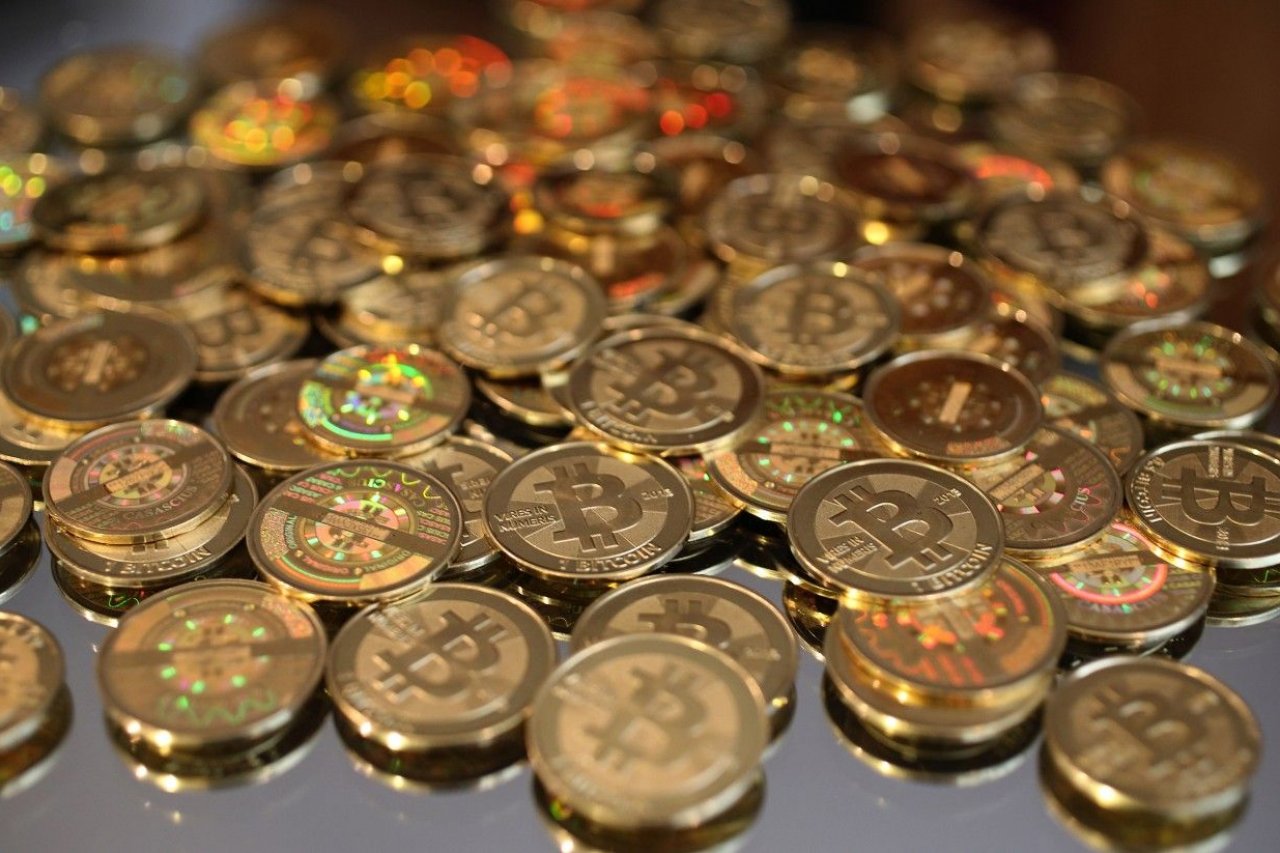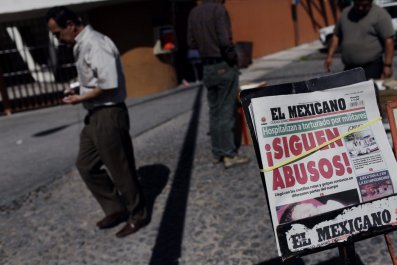Until a few months ago, pretty much the only people who cared about Bitcoin were drug dealers and socially-anemic guys who grew up playing Dungeons & Dragons... and still do. Now it's all over the news and Bank of America published a report saying, "As a medium of exchange, Bitcoin has clear potential for growth."
The attention comes not because Bitcoin itself is such a huge deal. According to that same Bank of America report, the limits set in the algorithms that govern the nationless digital currency mean that the total value of Bitcoin money will never exceed about $15 billion. Apple alone has $147 billion in cash; Bitcoin is barely a pimple on the global economy's back-end.
Bitcoin holds a fascination because it's exposing a turning point in the history of money -- a change that could be as significant as when China introduced paper money in the 11th century so citizens would no longer have to swap a sack of salt and a stone wheel for a cow.
Here's the key: Money has always been dumb. The dollar bill has no smarts at all -- it doesn't know what it is, where it's been, or where it's going. The only reason it's effective is the person on each end of the transaction is educated enough to know what a real dollar looks like and how valuable it is. The smarts in a cash exchange are in our brains.
When banks created credit cards in 1958, the necessary electronic smarts to make the system work were extremely expensive, the size of a room, and gave off more heat than a bonfire. So credit cards couldn't include smarts -- they're just rectangles of plastic with numbers on them. The magnetic strip -- which hasn't changed since its invention in the 1960s -- carries a little more information but has no smarts of its own. All the smarts had to be built into the big computers at retailers and banks.
This type of arrangement is increasingly causing problems. Seventy million Target customers had their credit card numbers and personal information pilfered because they carry "dumb plastic" while all the data stays in central computers that can be broken into by some hacker in Tuscaloosa or Tajikistan.
And "dumb cash" is so vulnerable, we have to move it around in armored trucks manned by guards carrying guns. We've tossed aside paper letters, paper airplane tickets, paper books -- but we're stuck with dumb paper money.
In the 2010s, technology is revealing a different way to do money. Smarts are becoming extremely cheap, small and energy-efficient. In the emerging Internet of Everything, we're outfitting things like house keys, toys, underwear and even forks with tiny intelligent chips that can connect wirelessly to networks. Meanwhile, billions of us carry smart phones that have more computing power than the first Cray supercomputers.
So the smarts no longer have to stay with the endpoints. Money itself could be smart, whether it's a piece of paper, a card or a digital currency. Money could know what it is, its value, its giver, its receiver and, in fact, its entire history -- every change of hands it has ever been a part of.
Bitcoin is starting to show how that might work. There is no central clearinghouse, no big computer where all the data is stored, no credit card numbers. Bitcoins are tallied and tracked by distributed computing. Essentially everyone using Bitcoins, which only exist digitally, contributes processing power to help maintain Bitcoins. Embedded in the digital money is an ability to know where it is and what it's worth. This allows Bitcoin to be used like cash -- you can hand it over to someone else without getting a third party (like a bank or credit card issuer) involved. There is no physical manifestation of a Bitcoin to verify. It has the smarts to verify itself and its value with the rest of the globally connected system.
Now stretch the Bitcoin concept a step further, to everyday currency. Technologists have floated the idea that everyone could carry a single smart bill of paper currency -- imagine something like a dollar bill implanted with a smart wireless chip. You load it up with money from your bank account. It would know who you are, maybe by reading your fingerprints or getting a signal from your phone. If someone stole it, they couldn't use it. Take this dollar to a store and tell it to give the store some of its value to pay for your purchase. Take it to a poker game, and use it to instantly transfer value to the guy who just whipped your butt with that flush.
But why have the piece of paper at all? Maybe the currency is in a card -- a new kind of smart credit card. Or why stick to any familiar form factor? Maybe the currency smarts are in a ring. Or, to go full circle back to Bitcoin, maybe the currency is just digital, existing as code in the cloud, accessed only by you through any device -- smart phone, smart watch, smart underwear.
The caveat is that such a transition is difficult. The beginnings of paper money probably didn't go so well, with the first villagers saying, "You want me to give you my cow for that?" So much has to go right to build the public's trust. Probably no new form of currency can happen without a nation deciding to back it, despite Bitcoin's effort to be stateless.
"Whether Bitcoin will turn out to be the currency of the future, which is what everyone wants to know right now, I really don't know," says Vivek Kaul, author of the new book Easy Money: Evolution of Money from Robinson Crusoe to the First World War. "Such things evolve on their own."
Technologists keep at this because they sense the dumb-money era needs to end, and there is new ground to break. Paypal and Square have brought the smarts a little closer to the currency, but only improve on the old system of dumb credit cards. Start-ups like OneID move us a little closer to a single secure digital identity that might attach individuals to their currency. Progress comes in fits and starts.
In 1999, Robert Levitan recruited Whoopi Goldberg to introduce digital money called Flooz. Fell apart in 2001. Lots of digital currencies have been tried since. Microsoft, Google, American Express and other big companies continue to try to develop mobile payments -- essentially smart credit cards embedded in code and accessed by smart phone. In Kenya, mobile-phone operator Safaricom has 17 million customers using a digital mobile wallet called M-PESA.
No one knows how or when smart money will catch on. One of today's biggest mobile payment systems is digital Starbucks cards. The name is so enticing: Decades from now, maybe people will be buying stuff using smart star-bucks, and wondering where the name came from.

























